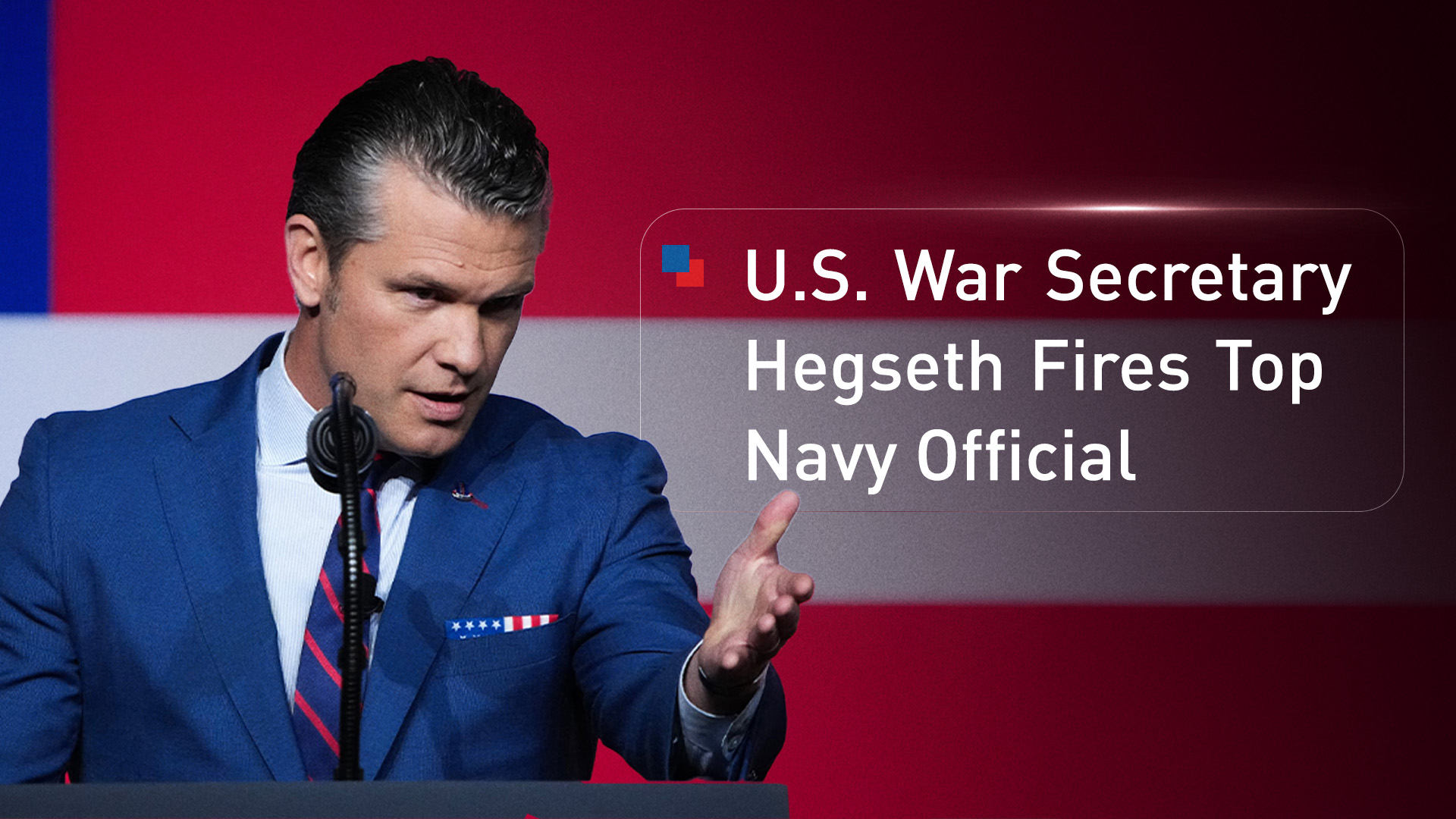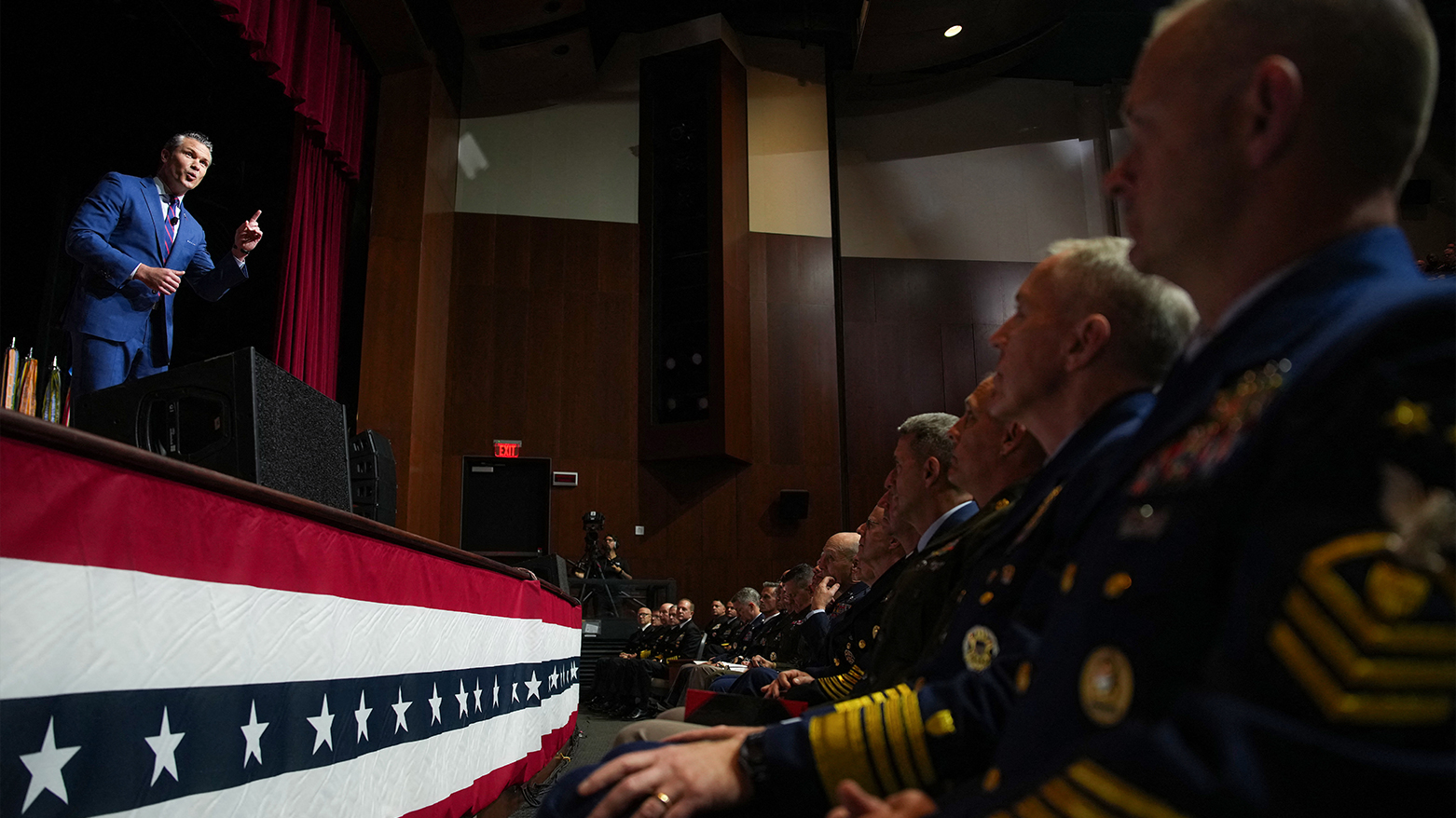Hegseth Fires Top Navy Official in Latest Move to Remake Pentagon Leadership
War Secretary Pete Hegseth fired the Navy's chief of staff, the latest move in a wider campaign to purge Pentagon leadership and remake its culture.

ERBIL (Kurdistan24) - In the latest and one of the most abrupt moves of a sweeping and often brutal campaign to reshape the leadership of the U.S. military, War Secretary Pete Hegseth on Friday fired the Navy's chief of staff, Jon Harrison, an unusually powerful aide who had been at the center of a bureaucratic power struggle within the service.
The sudden ouster, confirmed by the Pentagon, is not an isolated incident but the most recent manifestation of Hegseth's publicly declared mission to purge what he views as a failed culture from the nation's armed forces, a mission he dramatically detailed just days ago in an unprecedented address to hundreds of assembled generals and admirals, where he vowed to end the "woke department" and restore a singular focus on "warfighting."
Harrison's removal serves as a stark and immediate example of Hegseth's core belief, a mantra that is now echoing through the halls of the Pentagon: "Personnel is policy."
The firing, which was first reported by Politico, citing defense officials, followed the confirmation this week of a new Navy Undersecretary, Hung Cao, a high-profile Navy veteran and former Republican Senate candidate nominated for the post by President Donald Trump.
According to the report, Harrison, a Trump administration appointee who joined the service in January, and Navy Secretary John Phelan had orchestrated sweeping changes to the Navy's bureaucracy, introducing reforms to the policy and budgeting offices in what was seen as an effort to limit the influence of the undersecretary position.
Politico had previously reported that Phelan and Harrison had reassigned several aides who were meant to assist Cao upon his confirmation and had planned to personally interview all of his future military assistants to ensure that ultimate authority remained within the secretary's office.
This internal power struggle appears to have been decisively resolved with Harrison's ouster. In a brief statement, the Pentagon confirmed his departure, stating, "He will no longer serve as Chief of Staff to the Secretary of the Navy. We are grateful for his service to the Department.”
Harrison's firing is the latest tremor in a seismic upheaval that has been shaking the Pentagon for months. Since taking office, Secretary Hegseth has engaged in a dramatic game of "musical chairs," as described by Politico, removing a number of top officials. Earlier this year, he fired several of his own top aides and, in a more significant move, removed the chairman of the Joint Chiefs of Staff, as well as the uniformed leaders of the Navy, Air Force, and Coast Guard.
Each removal has been a deliberate step in a broader campaign to install a new generation of leadership aligned with his vision for a radically transformed military.

The ideological and strategic foundation for this aggressive and unrelenting purge was laid bare on Tuesday, Sept. 30, at a highly unusual and secretive gathering at a Marine Corps base in Quantico, Virginia.
In an unprecedented move that had caused significant confusion and alarm throughout the ranks, Hegseth had summoned hundreds of the military's most senior generals and admirals from their commands around the globe for an urgent, in-person meeting with no publicly stated purpose. In his address to this assembled leadership, Hegseth delivered what can only be described as a manifesto for his new "Department of War," a name he has officially restored to what was for decades the Department of Defense.
"The only mission of the newly restored Department of War is this: warfighting, preparing for war and preparing to win, unrelenting and uncompromising in that pursuit," Hegseth declared to the assembled officers.
He made it clear that this transformation required not just new equipment or strategies, but new people. "If I've learned one core lesson in my eight months in this job, it's that personnel is policy," he stated, a line that now serves as the primary explanation for the string of high-profile firings. "The best way to take care of troops is to give them good leaders committed to the warfighting culture of the department."
Hegseth’s speech was a blistering indictment of what he described as "decades of decay" under "foolish and reckless politicians" who forced the military to focus on the wrong things. "We lost our way. We became the woke department. But not anymore," he said.
He excoriated the previous focus on identity politics, diversity initiatives, and climate change, which he dismissed as "social justice, politically correct, and toxic ideological garbage that had infected our department." He vowed to rip out the politics, declaring, "No more identity months, DEI offices, dudes in dresses. No more climate change worship. No more division, distraction or gender delusions. No more debris. As I've said before and will say again, we are done with that shit."
This, he explained, was the rationale behind the removal of so many senior officers. "It's nearly impossible to change a culture with the same people who helped create or even benefited from that culture," he argued.
He described his job as determining "which leaders simply did what they must to answer the prerogatives of civilian leadership and which leaders are truly invested in the woke department and therefore incapable of embracing the War Department and executing new lawful orders." He offered a stark litmus test for his personnel decisions: "Out with the Chiarellis, the McKenzies and the Milleys, and in with the Stockdales, the Schwarzkopfs and the Pattons."
The core of Hegseth's reform agenda, as detailed in ten new directives that were sent to military commands during his speech, is a "ruthless, dispassionate and common sense application of standards." He ordered that every requirement for every combat position must return to the "highest male standard only," that all troops must take a PT test and meet height and weight requirements twice a year, and that grooming standards be strictly enforced.
"No more beards, long hair, superficial individual expression," he commanded. "If you want a beard, you can join Special Forces. If not, then shave."
He also announced a complete overhaul of the Inspector General (IG) and Equal Opportunity (EO) processes, which he claimed had been "weaponized" by "complainers, ideologues and poor performers." He called his new policy the "no more walking on eggshells policy," designed to liberate commanders and NCOs to enforce high standards without fear of frivolous complaints or career-ending repercussions.
This move to empower commanders, he argued, was essential to ending the "poisonous culture of risk aversion" and the "zero defect command culture" that he believes has promoted "risk averse go along to get along conformists."
It is within this revolutionary and deeply controversial framework that the firing of Jon Harrison must be understood. The internal power struggle within the Navy over the role of a newly confirmed undersecretary was not merely a bureaucratic dispute; it was a test of the old guard against the new order being imposed from the top of the Department of War.
Harrison, an unusually powerful chief of staff who had been central to reshaping the service's bureaucracy, was seen as an obstacle to a leadership structure more directly aligned with Hegseth's vision. His removal sends an unambiguous signal throughout the entire military apparatus: resistance to the new cultural and command philosophy will not be tolerated, and no position is too senior or too influential to be immune from the ongoing purge.
As the U.S. Navy grapples with monumental challenges, including its shipbuilding programs falling years behind schedule while adversaries surpass the productivity of American shipyards, Hegseth has made it clear that he believes the path to recovery begins not with new budgets or technologies, but with new leaders who are fully committed to his uncompromising vision of a military built for one purpose and one purpose only: to win wars.
